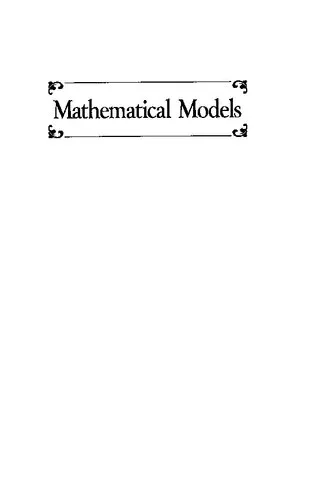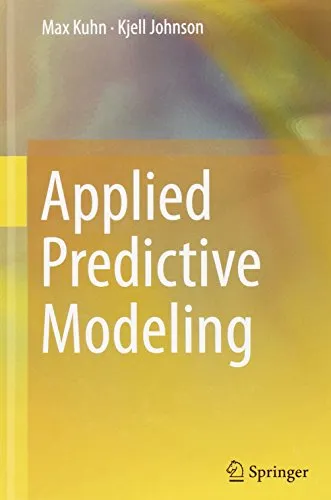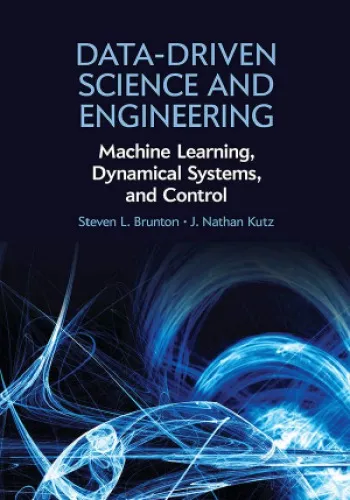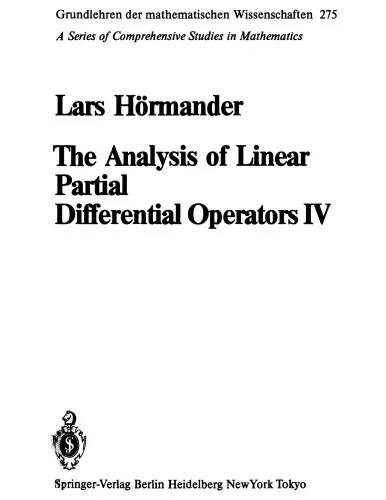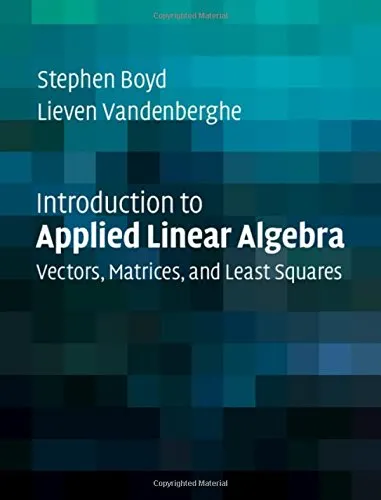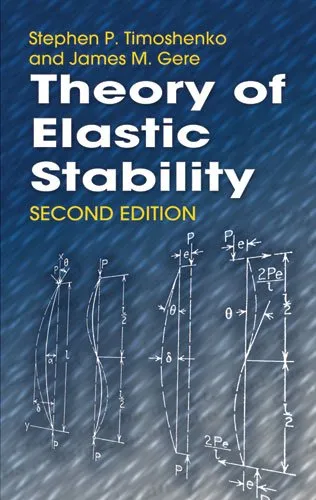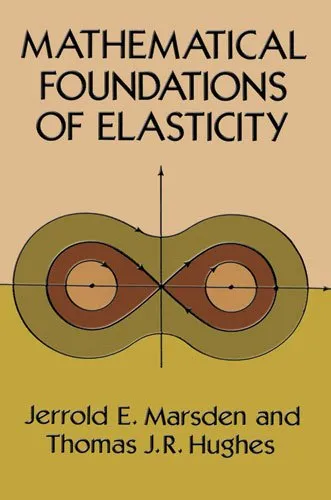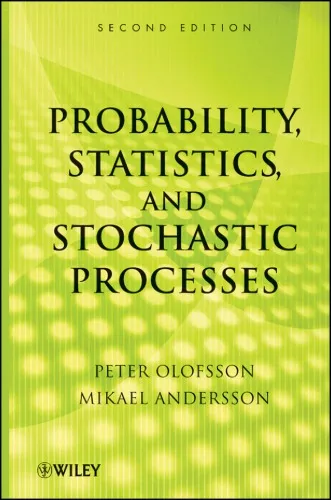Mathematical Models: Mechanical Vibrations, Population Dynamics, and Traffic Flow
5.0
بر اساس نظر کاربران

شما میتونید سوالاتتون در باره کتاب رو از هوش مصنوعیش بعد از ورود بپرسید
هر دانلود یا پرسش از هوش مصنوعی 2 امتیاز لازم دارد، برای بدست آوردن امتیاز رایگان، به صفحه ی راهنمای امتیازات سر بزنید و یک سری کار ارزشمند انجام بدینکتاب های مرتبط:
مقدمهای جامع بر کتاب "Mathematical Models: Mechanical Vibrations, Population Dynamics, and Traffic Flow"
کتاب Mathematical Models: Mechanical Vibrations, Population Dynamics, and Traffic Flow نوشته ریچارد هابرمن یکی از منابع بینظیر در زمینه درک مدلسازی ریاضی در مکانیک، دینامیک جمعیت و جریان ترافیک است. این اثر برای دانشجویان، پژوهشگران، و علاقهمندان به علوم کاربردی ریاضی و فیزیک، منبعی ارزشمند به شمار میرود. در این کتاب، نویسنده با استفاده از زبانی شفاف و مثالهای آموزشی، مدلهای پیچیدهای را بررسی کرده که در جهان واقعی به کار میروند.
این کتاب به ما یادآوری میکند که چگونه میتوان از معادلات ریاضی برای تحلیل پدیدههای مختلف، از ارتعاشات مکانیکی تا سیستمهای زیستی و حتی جریان خودروها در جادهها استفاده کرد. هابرمن در این کتاب تلاش کرده است تا قدرت و ظرافت ریاضیات را در توضیح مفاهیم فیزیکی و زیستی به نمایش بگذارد.
خلاصه جامع کتاب
کتاب در سه بخش عمده تقسیمبندی شده است که به ترتیب موضوعات ارتعاشات مکانیکی، دینامیک جمعیت و جریان ترافیک را پوشش میدهد. این بخشها به طور خاص به مفاهیم مدلسازی ریاضی و کاربرد آنها در تحلیل سیستمهای واقعی میپردازند.
بخش اول - Mechanical Vibrations: این بخش مفهوم ارتعاشات را با مدلهایی مانند simple harmonic motion آغاز میکند و سپس به موضوعات پیچیدهتر نظیر damped oscillations و forced vibrations میپردازد. در این بخش سعی شده تا روشهای حل معادلات دیفرانسیل مرتبط با این پدیدهها توضیح داده شود.
بخش دوم - Population Dynamics: در این بخش، دینامیک تغییرات جمعیتی بررسی میشود. مدلهای کلاسیکی مانند logistic growth و سایر تغییرات زیستشناسی نظیر predator-prey models تجزیه و تحلیل میشوند. به کارگیری مدلهای ساده برای پیشبینی رفتار سیستمهای زیستی یکی از جذابترین جنبههای این بخش است.
بخش سوم - Traffic Flow: یکی از بخشهای نوآورانه این کتاب مدلسازی جریان ترافیک است. با استفاده از معادلات دیفرانسیل و مفاهیمی نظیر conservation laws، جریان تردد خودروها در بزرگراهها بررسی شده است. این بخش برای مهندسان ترافیک و متخصصان حملونقل بسیار کاربردی است.
درسهای کلیدی از کتاب
- مدلسازی ریاضی ابزار قدرتمندی برای تحلیل و پیشبینی سیستمهای پیچیده است.
- ارتباط نزدیکی بین الگوهای ریاضی و کاربردهای آنها در دنیای واقعی وجود دارد.
- درک مفاهیم اساسی نظیر simple harmonic motion و growth dynamics میتواند زمینهساز موفقیت در پژوهشهای بینرشتهای باشد.
- تمرکز بر روی معادلات دیفرانسیل به عنوان ابزاری برای مدلسازی، میتواند باعث درک عمیقتری از رفتار سیستمهای چند متغیره شود.
جملات معروف از کتاب
"Math is not just about solving equations; it's about understanding and modeling the world around us."
"Through the lens of differential equations, we can fathom the elegance of dynamic systems."
چرا این کتاب اهمیت دارد؟
این کتاب تنها یک منبع آموزشی نیست؛ بلکه دیدگاهی جدید را نسبت به مدلسازی ریاضی ارائه میدهد. هم برای دانشجویان و هم برای متخصصان، مطالعه این اثر فرصتی برای درک کاربرد ریاضی در علوم مختلف است. علاوه بر این، مثالهای متنوع و تمرینهای کاربردی کتاب، به خوانندگان این امکان را میدهند که مهارتهای خود را تقویت کنند. اهمیت این کتاب به ویژه در زمینه تلفیق نظریه و عمل است و همین موضوع باعث شده تا سالها به عنوان یکی از منابع کلیدی در دانشگاهها تدریس شود.
در نهایت، مطالعه این کتاب نه تنها به ارتقای دانش ریاضی کمک خواهد کرد، بلکه به خوانندگان ابزارهای لازم برای تحلیل و درک بهتر دنیای اطراف را نیز ارائه خواهد داد.
Introduction to Mathematical Models: Mechanical Vibrations, Population Dynamics, and Traffic Flow
Mathematics transcends being merely a collection of abstract notions; it serves as a tool through which we can understand and predict real-world phenomena. My book, Mathematical Models: Mechanical Vibrations, Population Dynamics, and Traffic Flow, delves into the interplay between applied mathematics and realistic situations, offering readers a methodical journey from modeling foundations to advanced predictive analyses. This book serves as a pivotal resource for students, researchers, and professionals seeking a structured introduction to the mathematics underpinning physical vibrations, population studies, and traffic behavior. It unifies theoretical concepts with practical applications, ensuring the constant relevance of mathematics in addressing modern challenges.
Detailed Summary of the Book
The overarching goal of this book is to provide a clear and comprehensive exploration of the role mathematical models play in solving real-world problems. Broken into three fundamental topics—mechanical vibrations, population dynamics, and traffic flow—it guides readers through rich, illustrative examples and practical solutions. Let us outline a detailed overview of each section:
Mechanical Vibrations: Mechanical systems, from bridges to automobile suspensions, are governed by the study of vibrations. This section introduces differential equations, harmonic oscillators, and damping effects to build models that capture the behavior of steady periodic motion or damped oscillations within mechanical systems.
Population Dynamics: This part examines models that describe how populations evolve over time, starting from natural growth and extending to predator-prey systems, competition, and disease spread. By introducing nonlinear differential equations, such as the logistic model, this section offers readers a pathway to understand ecological and societal dynamics.
Traffic Flow: Traffic, though seemingly chaotic, exhibits patterns and behaviors that can be studied through mathematical models. Using flow dynamics, queuing theories, and fluid analogies, this section illuminates the movement of vehicles in a system, allowing readers to predict congestion and explore efficient traffic solutions.
Each topic builds upon foundational knowledge, gradually increasing in complexity while incorporating real-world applications. These models don’t merely solve mathematical equations but reveal profound insights into how natural and human-made systems operate.
Key Takeaways
- Understanding the relevance of differential equations in modeling real-world systems.
- Practical applications of mathematical models in engineering, biology, and transportation science.
- An intuitive approach to nonlinear systems, including stability, oscillations, and chaos.
- Development of problem-solving skills in predicting real-world outcomes based on model parameters.
- Bridge between abstract mathematical theory and practical implementation.
Famous Quotes from the Book
"Mathematics doesn’t only describe patterns; it explains the underlying rules by which systems operate and evolve."
"A model’s beauty lies not just in its accuracy but in its simplicity and its power to offer insight."
Why This Book Matters
In an age where complexity reigns, the ability to distill complex phenomena into mathematical models has never been more critical. This book represents a bridge between the theoretical elegance of mathematics and its practical utility in solving problems in the real world. Whether you are an engineer designing systems for safety or an ecologist studying species interaction, this book empowers you to think structurally and analytically. With its clear explanations and step-by-step approach, Mathematical Models: Mechanical Vibrations, Population Dynamics, and Traffic Flow is indispensable for fostering a deeper appreciation for mathematical modeling’s role in modern sciences and engineering. It stands as a testament to how mathematics enriches our understanding of the natural and constructed world.
دانلود رایگان مستقیم
شما میتونید سوالاتتون در باره کتاب رو از هوش مصنوعیش بعد از ورود بپرسید
دسترسی به کتابها از طریق پلتفرمهای قانونی و کتابخانههای عمومی نه تنها از حقوق نویسندگان و ناشران حمایت میکند، بلکه به پایداری فرهنگ کتابخوانی نیز کمک میرساند. پیش از دانلود، لحظهای به بررسی این گزینهها فکر کنید.
این کتاب رو در پلتفرم های دیگه ببینید
WorldCat به شما کمک میکنه تا کتاب ها رو در کتابخانه های سراسر دنیا پیدا کنید
امتیازها، نظرات تخصصی و صحبت ها درباره کتاب را در Goodreads ببینید
کتابهای کمیاب یا دست دوم را در AbeBooks پیدا کنید و بخرید
1307
بازدید5.0
امتیاز0
نظر98%
رضایتنظرات:
5.0
بر اساس 0 نظر کاربران
Questions & Answers
Ask questions about this book or help others by answering
No questions yet. Be the first to ask!
